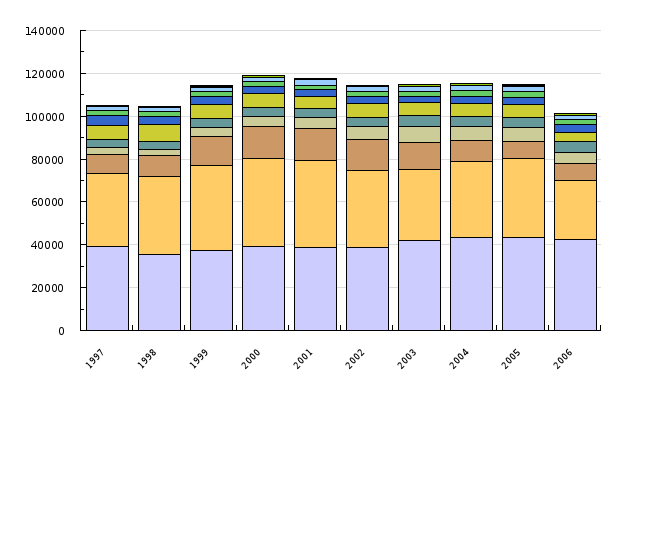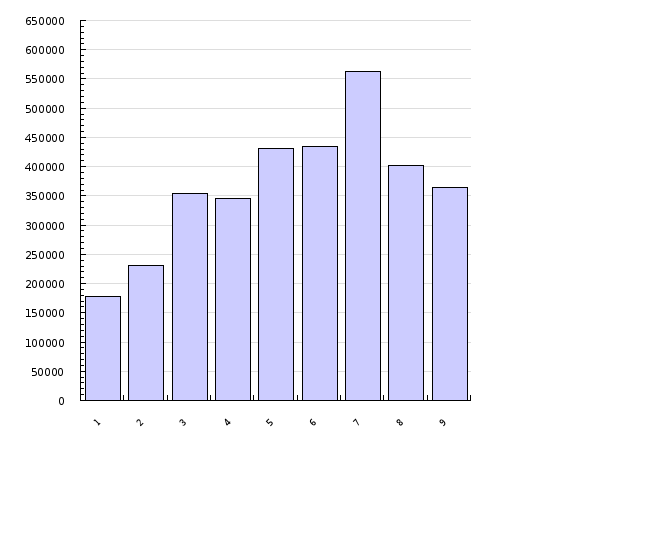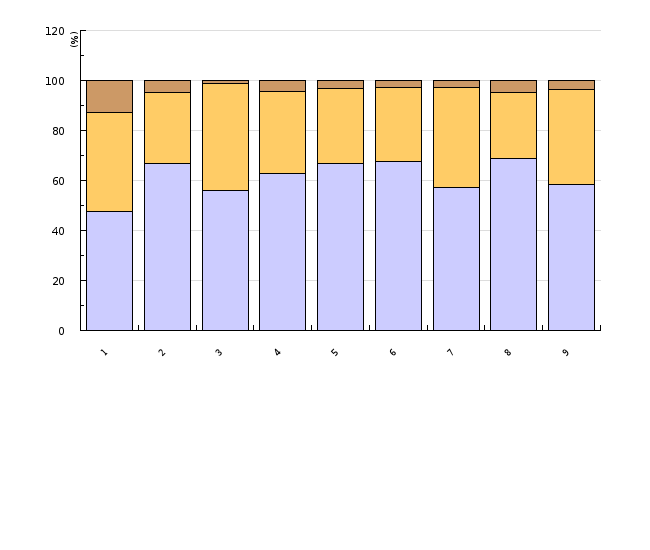[NB03] Game preservation

Key message

The state of wildlife in Slovenia is favourable; larger epidemics have not been identified. The number of herbivorous ungulates as well as wild boars has decreased. An increase in wildlife losses due to road kill raises concerns. The total amount of damage caused by wildlife has decreased.
Wildlife management includes all animal and plant species. Regulation of wildlife populations is based on game management plans that are submitted for adoption to the Ministry of Agriculture, Forestry and Food by the Slovenia Forest Service in accordance with a prescribed procedure.
Definition
Game includes species’ of wild mammals and birds that are subject to hunting and are specified in accordance with the Decree determining game animals and hunting seasons.
This indicator shows the influence of sustainable game management in the past decade based on animal removal from the wild. Removal means putting a burden on the population directly by hunting (culling), as well as other losses and is expressed in absolute numbers of removed animals by species. Losses resulting from human activities are shown separately (traffic, mowing, poaching, stray dogs, etc.).
The indicator is based on long-term standardised records kept by organisations that manage hunting grounds and special-purpose hunting grounds. The trends within the indicator are presented by sub-indicators – culling, losses and damage caused by game. The first and second sub-indicators are expressed in absolute numbers of animals removed from their populations, while the third is expressed in a nominal value of compensation paid to claimants and the percentages of main perpetrators (game species) of the damage.
The records are based on the regulations and are internationally comparable. They include annual statistics of culling, losses and caused damage.
Statistical data on sub-indicators (culling as part of animal removal) and, consequently, the indicator as a whole, is presented annually by the Statistical Office of the Republic of Slovenia in the Statistical Yearbook for each calendar year, under the Forestry and Hunting chapter. The indicator and all of its sub-indicators is included in the Report on the state of agriculture, food and forestry, prepared annually by the Agricultural Institute of Slovenia in cooperation with the Ministry of Agriculture, Forestry and Food.
Charts
| 1997 | 1998 | 1999 | 2000 | 2001 | 2002 | 2003 | 2004 | 2005 | 2006 | ||
|---|---|---|---|---|---|---|---|---|---|---|---|
| number | 39355 | 35543 | 37492 | 38993 | 38685 | 38660 | 41874 | 43249 | 43404 | 42675 | |
| number | 33864 | 36284 | 39416 | 41476 | 40841 | 36202 | 33327 | 35541 | 36909 | 27183 | |
| number | 8928 | 9955 | 13596 | 14795 | 14676 | 14347 | 12628 | 9919 | 7827 | 7904 | |
| number | 3032 | 2755 | 4289 | 4470 | 5088 | 5865 | 7223 | 6280 | 6440 | 5359 | |
| number | 4024 | 3742 | 4331 | 4355 | 4158 | 4468 | 5203 | 5034 | 4784 | 5066 | |
| number | 6562 | 7866 | 6420 | 6504 | 5884 | 6452 | 6134 | 5888 | 6073 | 4059 | |
| number | 4617 | 3923 | 3738 | 3444 | 2971 | 3006 | 2863 | 3353 | 3463 | 3724 | |
| number | 2280 | 1949 | 2084 | 2106 | 2180 | 2323 | 2453 | 2634 | 2604 | 2679 | |
| number | 1873 | 1820 | 2092 | 2032 | 2532 | 2375 | 2174 | 2446 | 2266 | 1914 | |
| number | 557 | 632 | 608 | 689 | 633 | 580 | 773 | 734 | 715 | 670 | |
| number | 95 | 289 | 112 | 114 | 87 | 135 | 180 | 143 | 135 | 123 |
Goals
· To preserve a high level of game biodiversity;
· To preserve the natural balance between herbivorous species and the plant component of ecosystems;
· To provide a nutrition base for higher trophic levels (large carnivores);
· To carry out hunting.
Comment
Game management includes all animal and plant species within an ecosystem. Interventions into game populations are part of management and are carried out on the basis of hunting management plans drawn up at the Ministry of Agriculture, Forestry and Food according to a prescribed procedure. The Slovenia Forest Service is responsible for the planning of game management in accordance with the Forest Act and the Game and Hunting act.
Game management plans are drawn up on the basis of expert background documents. The measures are harmonised with responsible bodies of hunting management regions, which represent larger ecologically homogenous units of game management in Slovenia. Proposals are harmonised with organisations responsible for carrying out interventions in game populations on the basis of the following parameters:
- past removal of individual game species from the wild (culling, losses – regardless of cause);
- trends of damage caused by wildlife on crops, livestock, buildings, in traffic and elsewhere;
- trends of bioindicators in populations and their environment;
- assessment of the state of hunting grounds as conducted by organisations responsible for managing hunting grounds and special purpose hunting grounds;
- experience and knowledge (theoretical as well as practical) obtained by experts in animal-related work during the operations of the Slovenia Forest Service.
After the minister responsible for hunting approves game management plans, the planned quotas of removing animals from the wild for each species and the work to be carried out in habitats are divided between individual hunting grounds within hunting management regions. Removal of game and related operations are supervised by the Slovenia Forest Service, while violations are prosecuted and sanctioned by the hunting inspection service and the courts.
The planned removal of individual game species includes both the cull and all identified (proven) losses, which are subtracted from the planned quota. In this way, the control of population dynamics is ensured; namely, if only the cull is included in the planned quota, additional accidental losses can occur, which have been showing an increasing trend in recent years – in certain species, their share in total removal can amount to tens of per cents.
Game in Slovenia is in a good state, intra- and interspecies indicators are favourable for most species, larger-scale disease epidemics have not been detected, besides expected cyclical epidemics in certain species (e.g. scabies in fox and chamois and intestinal and skin parasites in red deer and roe deer). The populations of certain game species (herbivorous ungulates and wild boar) that have an important impact on ecosystems (plant forest biomass, crops) have been reduced through increased removal. At the same time, increasing losses are raising concerns. Losses in traffic are on the increase, including animal mortality, material damage and potential injuries/deaths of participants in traffic. The increase in removal of animals has resulted in reduced damage caused by wildlife.
As regards game, trends in Slovenia do not differ from European trends (e.g. increasing populations of wild boar throughout Europe in recent years). The shrinking of appropriate habitats does not allow significant growth of populations of key game species.












